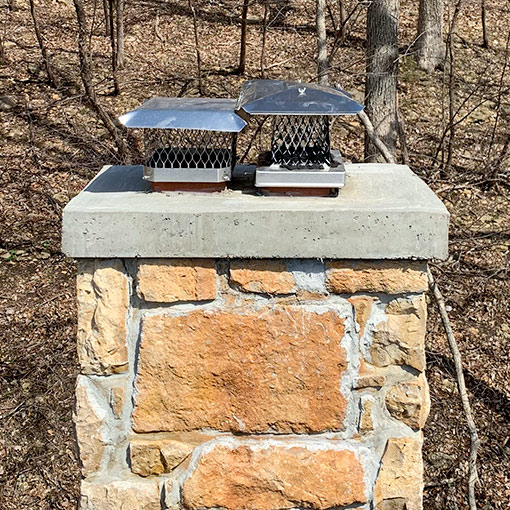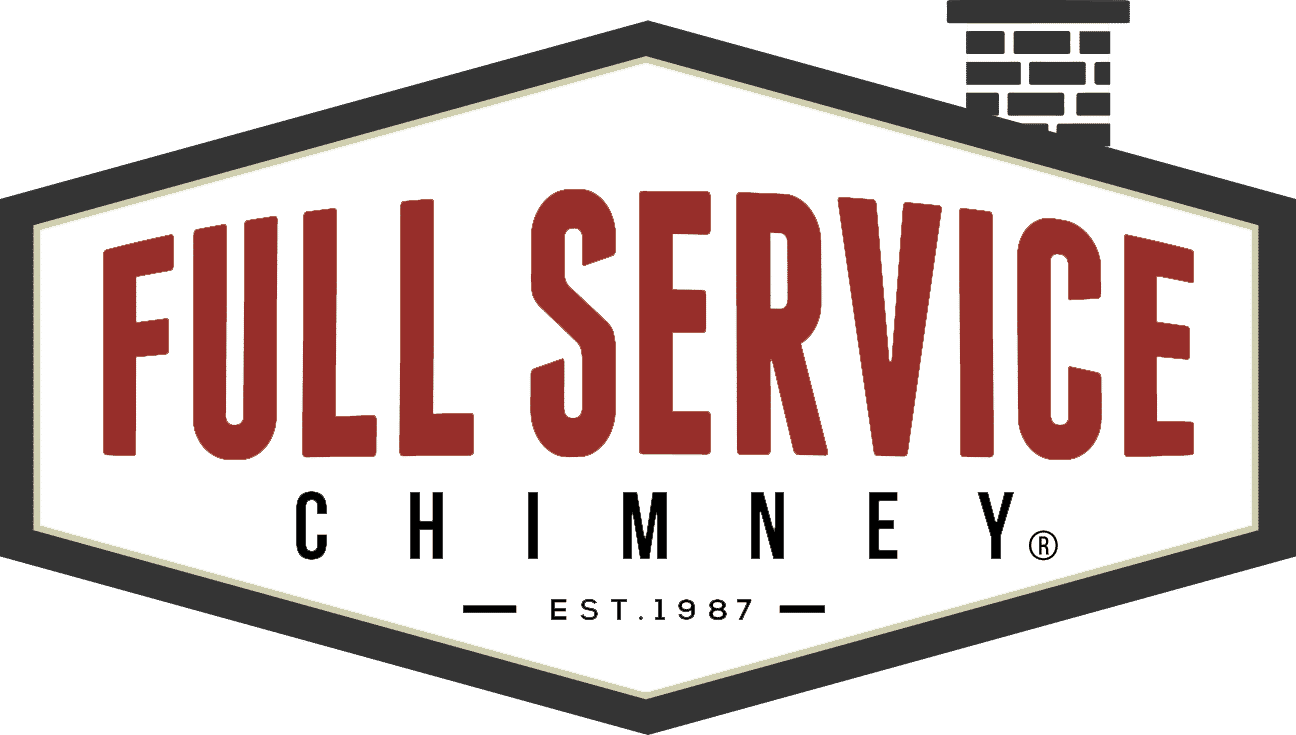Chimney tops, otherwise known as crowns, must protect the home, as do all exterior surfaces of a chimney. Since it acts as the shield against wet weather elements, a crown is a necessary part of any masonry fireplace system. The problem that all chimneys eventually face is deterioration. That’s the slow destruction that happens over time, more so if precautions weren’t actively taken during the construction of a new chimney.
Table of Contents
In this post, we review the differences in doing repairs using a chimney crown seal product vs. brand new construction or completely rebuilding your chimney crown. We’ll also explain the conditions that naturally happen and lead to common structural issues that can affect your home’s fireplace exhaust system.
Allow us to start by showcasing the artistry and craftsmanship that goes into new construction and later compare your options for applying crown sealants on top of your cracked mortar.
The Craftsmanship of New Crown Construction
A properly constructed crown surrounds the top flue tile of a clay liner (present in most masonry flues). While the crown helps keep the liner in its proper position, it must not bind to the flue, preventing it from being able to self-adjust up and down. The flue liner must be able to expand and contract during the warm-up and cool-down process that all chimneys are subject to, especially when in use.
If a liner is stuck to the top of a crown, both the crown and clay liner could become damaged as the flue expands during use. For this reason, repair technicians trained in new chimney construction of must take added steps to ensure the top flue tile can slide through the crown while still maintaining a water-tight seal.
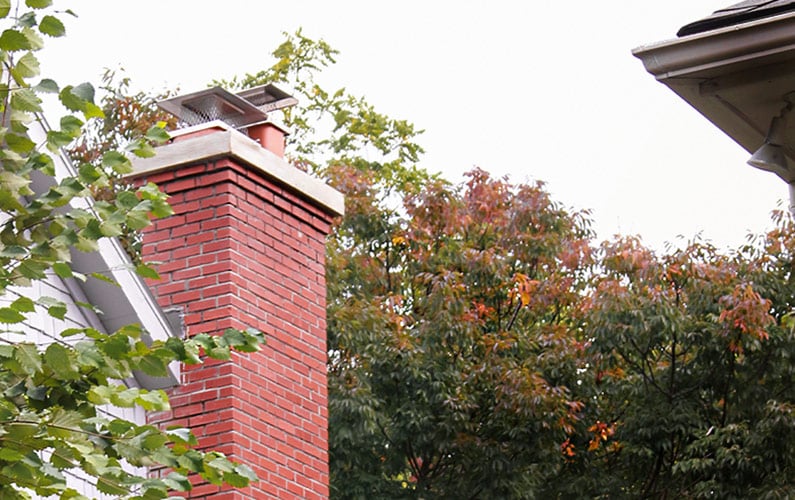
Building a new chimney crown is a combination of math, science, and skilled artistry. Which is why all Full Service Chimney™ engineers earn industry certifications and undergo continued training throughout the lifetime of their careers!
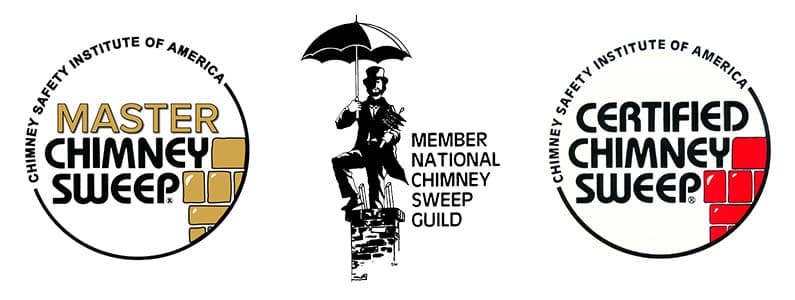
Why are Chimney Crowns Necessary?
Masonry chimneys are the most exposed part of your home and rooftop. Whether wind, rain, snow, or ice, all seasons bring with them an element that causes a negative effect on old (or unprepared) structures, resulting in mortar-made crowns to crack and start to crumble.
The resulting gaps left behind trap water inside and start the cycle of damage. During the coldest months, when the water freezes, it causes those small cracks to expand, leading to bigger issues.
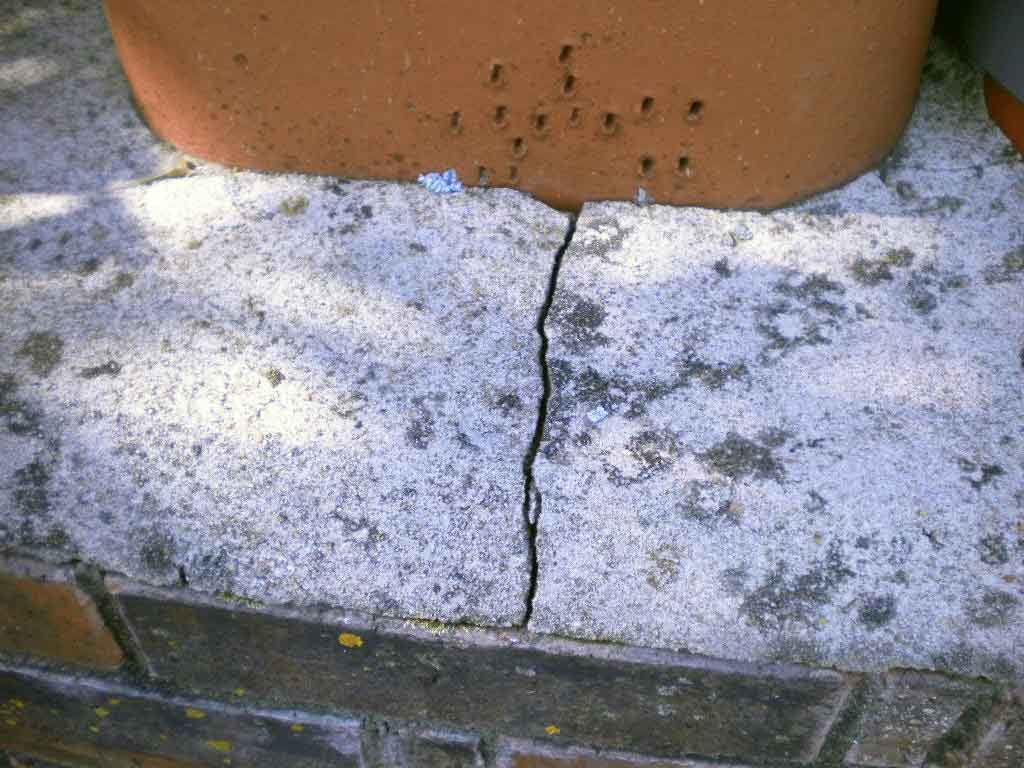
A cracked crown that allows water and debris to infilitrate the home and cause damages.
Conditions that Lead to Resurfacing or Reconstruction
The relentless punishment that weather conditions put on your home every year is the reason why chimney resurfacing or rebuilding is necessary. It’s an unfortunate side effect of the naturally occurring freeze and thaw cycles.
If your crown was constructed of concrete with added rebar for reinforcement from the beginning when it was originally built and not exposed to damp or freezing conditions, then its life expectancy could be indefinite!
That’s impressive.
However, not all crowns were built to last, and even those well-made will show the deteriorating effects of freeze and thaw conditions in as little as ten years.
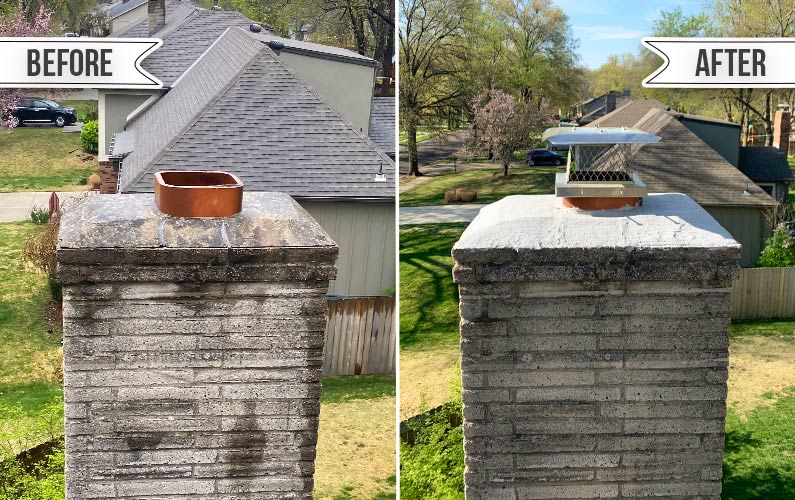
Before & After Image of a CrownSeal Application
What is a Chimney Crown Wash?
A crown wash for your chimney is a top surface coating a few inches thick. It covers existing cracks on top of your masonry chimneys. A wash crown is formed out of concrete and it’s purpose is to help shed water away from your chimney.
There are various chimney crown coats on the market today, and they all have a sole purpose: water prevention. Once applied and set to dry, the coating acts as a protective barrier between the elements and your home.

Image shows an example of a “Wash Crown” during the drying process.
Everything listed on the page is essentially designed to stop rainwater from getting inside your home. Most often, crown seals are used as a patch repair to stop a water leak.
Quick DIY “Patch Repair” Options When Your Crown is Cracking
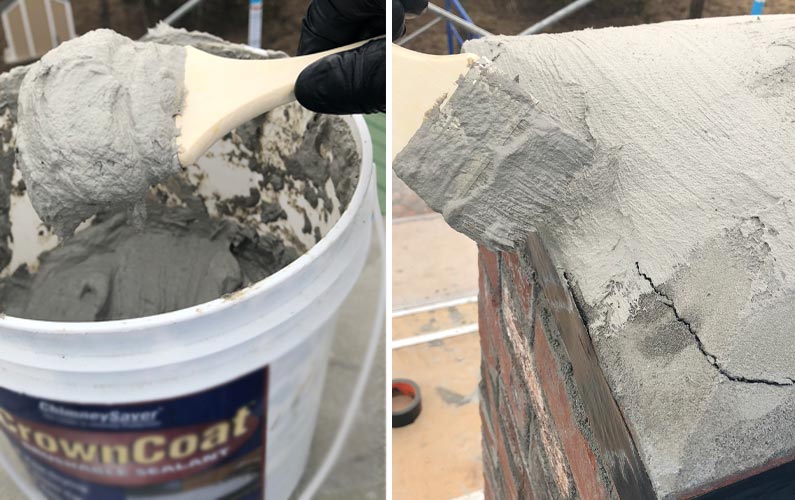
How to Apply Brush-On Crown Sealants
If the concrete top of your chimney has started cracking, but it’s not quite to the point of falling apart, then fear not. The chances are high that it’s still repairable. You can apply a chimney crown sealer or a crown coating product that forms a flexible waterproof shield in many cases. Which helps provide water protection to the brick-masonry structure that stands underneath.
Brush-On Solutions Offer Short Term Protection
Chimney CrownCoat or other chimney crown sealant type products are a commonly recommended repair since it’s a simple brush-on surface coating. Whether you do it yourself or hire a professional to perform the service, understand that it’s different from replacing or re-pouring a whole new concrete cast crown.
Brushable crown repairs are a simple process using an elastomeric coating made with special bonding agents that adhere to your crown. These are readily available products quickly applied with a brush or a trowel and are simple to use.

ChimneySaver CrownCoat Brushable Sealant requires tape, gloves, and a brush.
NOTE:
Any brush-on type of chimney sealant application does not remove the defective crown, and it does not solve the problem. At best, it can buy you some more time to make a plan for future repairs.
Just be aware that eventually replacing will become unavoidable and the longer chimney problems go unresolved, the more extensive your damages.
Why Use a Crown Seal?
If you choose to apply a crown seal or chimney sealer, then the result is a thin, resurfacing top coating that prevents water from continuing to get inside your home.
The sealer acts as a temporary barrier or shield from moisture, which paint, tar, and caulking could never do. Your Full Service Chimney™ technician can usually perform this service on the same day of your inspection.
If a temporary fix is not your style and you’re interested in permanent solutions, keep reading.

Example image of a “crown seal” after it’s dry.
What is a Concrete Crown Pour?
A crown pour is considered a new construction. It is demolishing the old chimney top and replacing it entirely by repouring a new concrete crown. We also remove any loose bricks that may be spalling or crumbling from the damage during this removal process. Our certified repair technicians are trained in the art and methodical science that is building chimney crowns.
We’ve developed the best way of getting top-quality results. The specifics are too much for this post, so we won’t talk about dimensions, math, or exact concrete mix recipes but rather explain the basics of new crown construction as simply as possible.
How Do You Pour a New Crown on a Chimney?
Since every system and its brick stack are built differently, they are constructed in a large array of sizes. That’s why there aren’t any viable options for one-size-fits-all chimney tops. Each brick-masonry chimney requires accurate measurements when making any repairs. Your contractor should be certified and trained in all aspects of repairing masonry systems.

Example image of a still wet “crown pour” immediately after pouring the concrete into the forms.
Pouring New Concrete Chimney Crowns
Our preferred method of repair is a full chimney top replacement. We utilize a custom-built, adjustable crown form and rebar for the ultimate support and reinforcement. Pour and set the proper blend of concrete mixture on top of the chimney and smooth it out with a trowel into a nice overhang drip edge.
If you’ve never done this before, it takes a certain amount of quickness and finesse combined with patience to get just the right formation and smooth surface. It’s fun, and our crews love pouring new crowns, but it takes a great amount of skill and craftsmanship to perfect the art of this construction!
Can All Crowns be Fixed?
While it depends on the current damage at the time of applying your chosen chimney sealant product, this can be decent protection as long as you understand that it’s a temporary fix.
A crown seal service is a short-term solution to an ongoing problem; therefore, if the source of water entry isn’t found and fixed, then you’ll have to pay for this repair every 2-3 years.

Example image of a concrete poured overhanging crown.
How Much Does it Cost to Fix a Crown?
When comparing the price of one crown seal application vs. new constructions, the former resurfacing option will be much cheaper. However, that cost adds up after needing to have it redone every few years, and the risk of extenuating damages increases every year you put off fixing your chimney’s top.
If you’re looking for pricing, we recommend checking our Replacement Service Page for listed details on the standard price range for a new crown pour in our local area.
What is a Floating Crown?
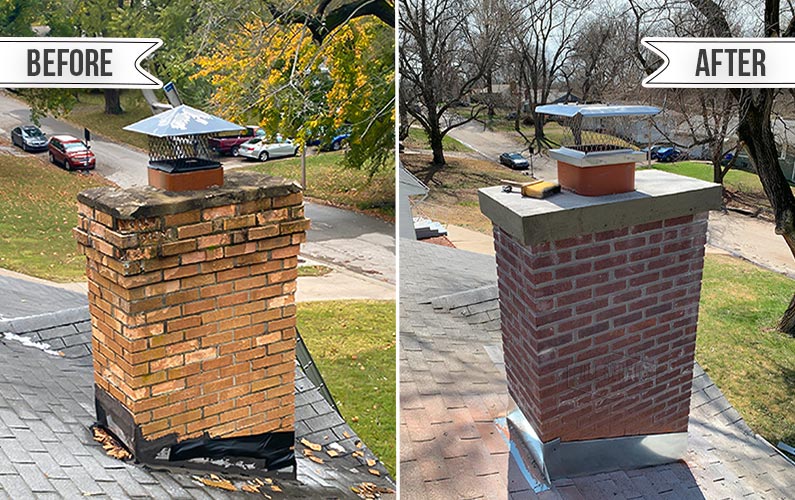
An Overhang Crown is a Full Service Chimney™ Specialty Repair Service for your home to help prevent unwanted leaks. It provides homeowners with the ultimate protection from the harshest outdoor elements. A chimney top that has a block that extends over the edge is called an overhang crown. It’s sometimes referred to as a “floating crown.”
It’s ideal is to verify that the water that hits the top never makes contact with the most delicate areas or joints. When water is allowed to penetrate these areas, it leaves your home susceptible to damages caused by falling rain, hail, snow, and ice. Protective treatments can help stop this before it starts, but not unless the product is applied early-on after construction.
Summary
Now you know all the details. We’ve compared a chimney crown seal vs. new construction of a complete crown pour. The decision for us is easy and a clear choice. Rebuilding a new crown is always the best option for long-lasting protection for your home, roof, and fireplace system.
However, just like the homes we work on, we understand every situation is unique. So the need for a quick seal repair job is often justified. After your annual inspection, we always give our customers the full evaluation report covering all the available options. Then our certified repair techs provide top-tier services regardless of which repair option you choose.
